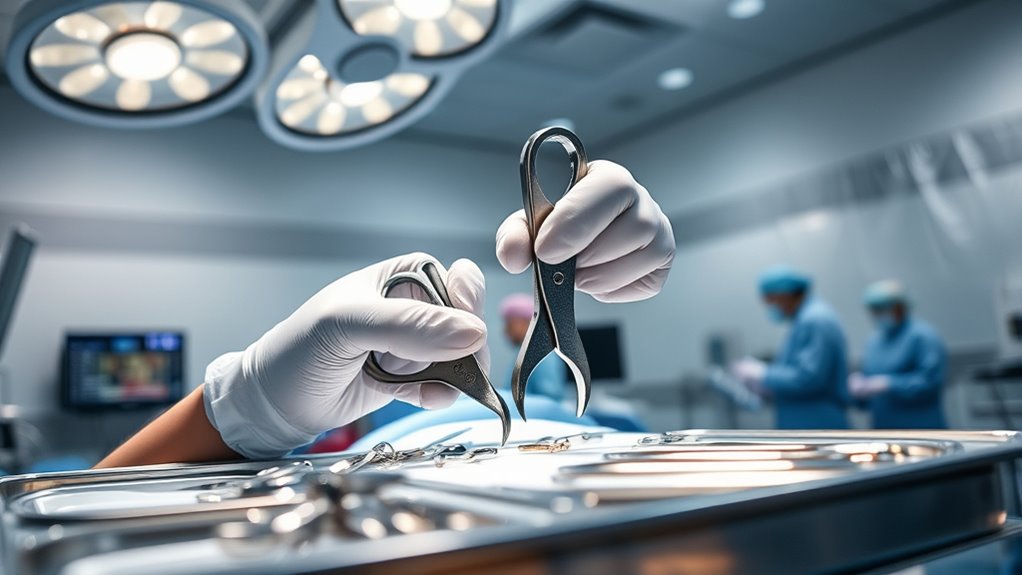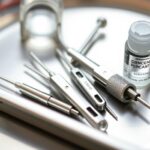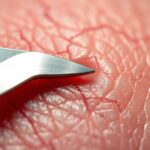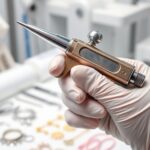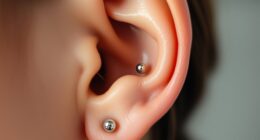In surgical theaters, you must guarantee all jewelry, including earrings or piercings, are properly sterilized before use. Follow strict protocols by autoclaving jewelry, verifying sterilization, and handling items with sterile gloves and tools. Maintain a sterile environment, disinfect skin thoroughly, and use aseptic techniques during piercing procedures. Proper documentation and disposal are essential for safety. Staying vigilant about these steps helps prevent infections—if you continue, you’ll discover even more vital practices to follow.
Key Takeaways
- Ensure jewelry is properly sterilized, sealed, and validated through autoclaving before handling or contact with the patient.
- Use sterile techniques, gloves, and instruments when handling jewelry to prevent infection risk.
- Verify the sterility of piercing instruments and high-quality, hypoallergenic earrings prior to use.
- Handle jewelry with sterile forceps, avoiding contact with non-sterile surfaces during placement.
- Maintain a clean, organized environment and document sterilization processes for compliance and safety.
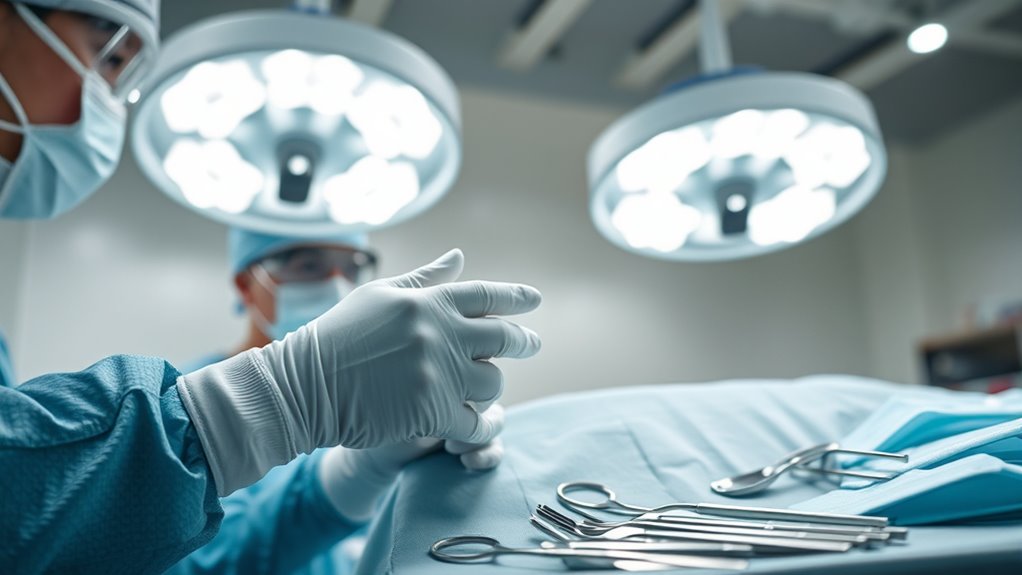
Despite the popularity of body piercing, hospitals and surgical theaters maintain strict protocols to prevent infection and guarantee patient safety. As a scrub tech, understanding the importance of jewelry sterilization and ear piercing safety is vital. Proper sterilization procedures are the cornerstone of infection control, especially when dealing with body modifications in a sterile environment. Any jewelry, whether earrings or decorative pieces, must undergo rigorous sterilization before being used in a surgical setting. This process eliminates bacteria, viruses, and other contaminants that could cause serious infections if transferred to the patient. You need to confirm that all jewelry is appropriately sterilized with validated methods, such as autoclaving, and that it remains sealed until it’s used. Introducing unsterilized jewelry into a surgical field can compromise the entire procedure and put the patient at risk.
Ear piercing safety, in particular, requires meticulous attention. When performing or assisting with ear piercings in a surgical theater, you must verify that the piercing instruments are sterile, and the environment maintains strict aseptic conditions. This includes using sterile gloves, draping techniques, and ensuring that the patient’s skin is properly disinfected. The process begins with selecting high-quality, sterilized earrings designed for medical use—these are typically made of hypoallergenic materials like surgical steel or titanium. You should double-check the sterilization status of these items before they come into contact with the patient to prevent any contamination. Additionally, understanding the significance of color accuracy in medical imaging ensures that the procedures are accurately monitored and documented.
Infection prevention doesn’t stop once the jewelry is sterilized. You also need to keep the environment clean and organized, minimizing any chance of cross-contamination. This involves proper hand hygiene, correct donning of sterile gloves, and maintaining a sterile field throughout the procedure. When handling sterile jewelry, avoid touching non-sterile surfaces, and use sterile instruments or forceps for placement. Post-procedure, ensure that any used jewelry is properly disposed of or re-sterilized if it’s to be reused, according to hospital protocols.
Frequently Asked Questions
Are There Specific Guidelines for Piercing During Emergency Surgeries?
During emergency surgeries, there are no specific guidelines for piercing, but safety is vital. If an emergency piercing occurs, you should prioritize rapid removal to prevent infection or complications. You need to act quickly, following standard sterilization and safety protocols, to minimize risks. Your role involves ensuring sterile conditions and assisting with the removal process if necessary, helping the surgical team maintain a swift, safe procedure.
How Often Should Piercing Sites Be Checked for Infection?
You should check piercing sites frequently, ideally every few hours, to guarantee jewelry removal and infection monitoring. Promptly remove jewelry if signs of redness, swelling, or discharge appear. Consistent checks help prevent infections and promote healing. By staying vigilant, you protect your patient’s health and prevent complications, ensuring a safer surgical environment. Remember, frequent inspections are key to catching issues early and maintaining ideal care standards.
Can Pierced Jewelry Be Safely Removed During Surgery?
You can safely remove pierced jewelry during surgery, but you should do so cautiously to reduce infection risk. Jewelry removal minimizes tissue trauma and prevents interference with surgical instruments. Make sure to handle jewelry with sterile gloves and dispose of it properly afterward. Always follow facility protocols, and if removal isn’t possible beforehand, ensure the jewelry is secured or covered to maintain a sterile environment and lower infection risk.
Are There Differences in Protocols for Different Types of Piercings?
You might think all piercings follow the same protocols, but different types of jewelry and piercing locations require specific handling. For instance, ear cartilage piercings need extra care compared to earlobe piercings. Surgical protocols adapt to these differences to prevent infection and ensure safety. Knowing the nuances helps you prepare properly, especially when managing jewelry removal or sterilization, maintaining sterile fields, and following facility guidelines tailored to each piercing type.
What Are the Legal Implications of Piercing Violations in the OR?
You should understand that piercing violations in the OR can lead to serious legal implications, mainly due to increased infection risk and breach of health regulations. If you don’t follow proper protocols, you could face legal liability for patient harm, which might include lawsuits or professional disciplinary actions. Staying vigilant and adhering strictly to established procedures helps protect patients and shields you from potential legal consequences.
Conclusion
Sticking to piercing protocols in the surgical theater isn’t just important—it’s a matter of life and death. You’re the frontline hero, ensuring every step is precise and sterile, preventing infections that could be more catastrophic than a hurricane. Remember, your attention to detail can save lives and keep surgeries running smoothly. Stay vigilant, follow protocols to the letter, and realize that your role is more crucial than you ever imagined—because in the OR, perfection is the only option.
I’m Gillian. I love piercings and tattoos- there’s something about the way they make your body look that just makes me happy. I started this blog to share my passion for piercings and tattoos with the world and to help people who are thinking of getting their first piercing or tattoo.
I’ve been writing about piercings and tattoos for a while now on piercings-body.com. I love sharing my knowledge with others and helping people make informed decisions about their bodies.

